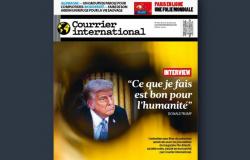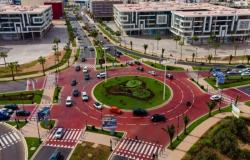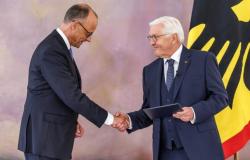
The Canton of Geneva launched its first reflections on industrial ecology, a concept very close to the circular economy, twenty years ago. Geneva is also the first Swiss canton to have introduced industrial ecology explicitly in its legal framework1 and its public policies. More recently, in 2021, its law on various constructions and installations was modified to promote low carbon construction, re -use, recycling and biosourced materials. In 2022, the new waste law was adopted by the great Geneva council thus anchored three main principles: reducing waste at source, better sorting it and eliminating it locally. Finally, in 2023, the State of Geneva and the other seven members of the Great Geneva signed the Grand Geneva charter in transition2thus agreeing on ecological transition issues for the cross -border agglomeration and in particular on the objective of reduction by five of the imprint material3 on this territory by 2050.
The metabolism of a system and that of a territory respond to the same logic which supposes to know and understand the flows. Like an organization that assimilates resources, converts them into energy and rejects by-products, the activity of a territory captures raw materials, transforms them and/or consumes them, then emits discharges (waste and emissions in the air, water and soils, etc.). In one case as in the other, the efficiency of metabolism and therefore the resilience of the system or territory are then based on the optimization of flows to minimize losses and improve the use of resources.
A first study4 Geneva metabolism was published in 2002. It offers an overview of the flows and stocks of material and energy used by Geneva economic activities. This synthetic overview made it possible to highlight the most important flows : building materials, energy agents, water and food products. This work also made it possible to trigger the first actions, including the ECOMATGE program which promotes recycling and reuse of excavation materials and mineral materials from deconstructions5. The Genie.ch platform6 also stems from the approach initiated in 2002. A second study7published in 2015, exudes the results and perspectives following the work carried out since the first search in 2002.
A new scale to amplify the circular economy
By observing both the distribution of resources and the intensity of flows, whether natural (water, air, biodiversity …) or anthropogenic (population, energy, materials, waste, etc.), the Canton of Geneva (282 km2) appears at the heart of a much larger and cross -border living area, Greater Geneva (2000 km2).
It is therefore on this scale that a work was engaged in 2021 for the acceleration of the circular economy of the Franco-Valdo-Genevois Life Basin8admitting that the materiality of flows prevails over administrative division when it comes to apprehending the metabolism of the territory.
This last study of the metabolism of Greater Geneva was coupled with an econometric study. First, the territory has acquired an understanding of its economic vulnerabilities (contribution of sectors to the economic dynamics of the territory, escape from local demand and dependence on imports) and environmental (climate imprint and material imprint of these sectors). Among the major lessons of this phase, we will remember that 40 % of the Greater Geneva’s demand escapes from the territory, and that the impact of consumption by households and businesses turns out to be thirteen times higher than that of its production. Acting on the most dependent for imports also represents a substantial job of the order of 100 000 jobs. Convert 10 % of imports in local exchanges would generate more than 10 000 direct jobs and 5 billion production CHF within the regional economy, not to mention the multiplier effect estimated at 161/100 for Greater Geneva. This ratio means that 100 CHF of direct production also generate 61 CHF of additional production in the rest of the economy of Greater Geneva.
Then, the study made it possible to prioritize the sectors with strong economic challenges (the most dependent on imports and which can satisfy a large part of local demand) and environmental (the most contributing to the environmental footprint generated by the consumption of the territory). The sectors with the highest capacity to act, due to the local circular dynamics already in work and supported by political priorities, could have been highlighted. In total, six strategic sectors have been identified, among which three are considered key levers to support the acceleration of a circular and sustainable economy in Greater Geneva: the machinery and equipment industries, the building and town planning work sector, as well as the agro-food sectors. Finally, a collective dynamic was initiated by inviting both private and public actors to co -build recommendations for public authorities.
From the analysis of flows to political orientations
The 2021 study delivered new lessons including the French, Vaudois and Genevan elected officials of Greater Geneva have fully seized in favor of a political seminar devoted to the circular economy. To facilitate exchanges, political leaders have projected themselves in the future (2035) imagining that the circularity objectives would have been achieved on this date and by taking an interest in the framework conditions which would have made them possible. The performance achieved in 2035 was then declined around the following principles:
– The values have changed: the consumer is more inclined to buy local products, consumes less, but better; The local, the sustainable, the repairable and the recyclable become wages of quality and value brands;
– the population and the companies are supported and the means are facilitated to enable them to find suitable and concrete solutions;
– The public sector assumes its role as a leader to stimulate, support, coordinate and enhance;
– the professions linked to the circular economy, but also volunteer, crafts and local know-how are valued;
– The territory is designed as a set of “urban mines”9 which contribute to that it is less dependent on imports;
– Important work has been done to cross obstacles and find opportunities in cross -border in order to achieve a common vision;
– Public and private actors are mobilized and put in networks.
Rather unusual, this work format has been a major acculturation time to better understand the complexity of the issues and identify cross -border opportunities. Concretely, the elected officials then decided on a encrypted political objective: to reduce the material imprint of a factor five, by reducing the amount of mineral and organic resources consumed from 20 t/hab/year to 4 t/hab/year by 2050. It is the second of the ten objectives of the Grand Geneva Charter in transition.
To meet this objective, elected officials also expressed clear instructions to supply a cross -border territorial vision10 And build the Franco-Valdo-Genevois action plan: Pact’Matière.
What transition to action?
A Franco-Swiss technical group is responsible for developing this action plan, with the rule of not composing a collection of initiatives and programs specific to each member of Greater Geneva, but to identify levers and optimizations promoting cross-border collaborations, ensuring respect for everyone’s prerogatives. Always delicate exercise …
-Pact’Matière thus offers 34 actions. Identified in collaboration with public and private actors, they are articulated around five strategic areas, including a transversal containing joint support measures to change. The remaining four being: construction; Consumer goods (including textiles and electrical and electronic equipment); agriculture and food; Industries. Nine measures have been selected as priority at the launch of the implementation of Pact’Matière and are available in three categories:
– Observe, follow and assess circular economy practices;
– Support for change all actors in the economic life of the cross -border basin;
– Facilitate the activities of the circular economy, for example by innovation or financial support.
By developing local exchange networks and the interactions between actors of the same territory, the circular economy is a formidable vector to relocate flows, develop a more resiLink and meet the control challenges of the value chain and short circuits. If the circularity has great opportunities, it requires taking up a certain number of challenges: for example the implementation of shared leadership within public actors, the measure of the impact of actions or even support for change.
Like any process of transformation, the transition from linear model to the circular seems to generate more questions than certainties, perhaps even-from a certain point of view-more risks than opportunities. It is however the opposite, because in the register of certainties, it is one – major – that we know: at the current rate of the consumption of resources, the future of the linear economy is counted. Not to change or act too slowly, the greatest risk then lies in the alteration of our quality of life, except to show will and dexterity by identifying in the sobriety the extent of promising possible and new forms of social innovation.
Article published in “Économie Circulaire an aménagement du Territoire “, The spaces of spaceuisse, n ° 1 | 2025
Notes
1. Especially art. 12 of the cantonal law Agenda 21, entered into force in 2001, art. 161 of the Cantonal Constitution of 2012
2. Grand Geneva charter in transitionversion adopted by the assembly of the local cross-border cooperation group (GLCT) Grand Geneva on June 23, 2022. Downloadable on Grand-geneve.org
3. The material imprint corresponds to all the raw materials mobilized to satisfy final consumption, including indirect flows (raw materials used during production abroad, during transport, etc.).
4. Industrial ecology, first results and perspectivespublished under the direction of the service Cantonal waste management (State of Geneva), available on GE.CH
5. GE.CH> Files> Reduisons-Nos-Dechets> Reduction-Nos-de-Source> Build-avec-Materials-Recycles
6. genie.ch
7. New Geneva resources: 15 years of work in industrial ecologypublished under the direction of the Directorate General of the Environment
8. Acceleration of the circular economy of Greater Geneva – Summary of the Projectt, published under the direction of the State of Geneva, Greater Geneva and the Industrial Services of Geneva (SIG), 2022
9. The expression “urban mine” makes the parallel with that of “natural mine” and refers to matters or objects on a territory, whose holders no longer have the use and which constitute a deposit of resources.
10. Grand Geneva – Territorial Vision cross -border 2050 – Synthse, adopted by the GLCT assembly, July 2, 2024







